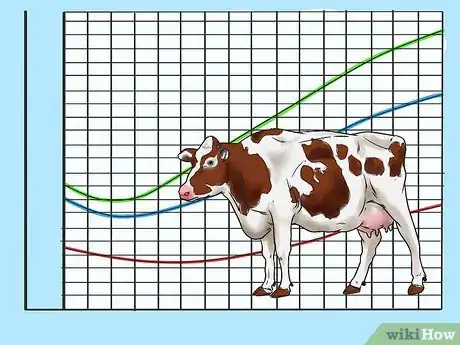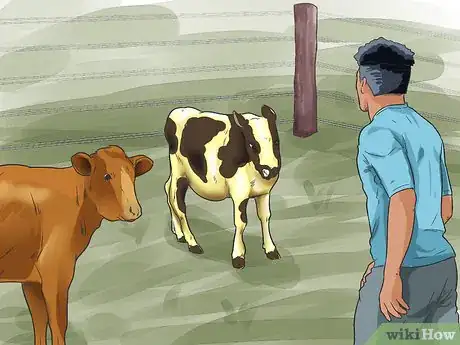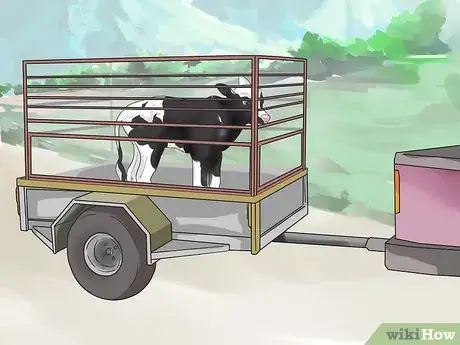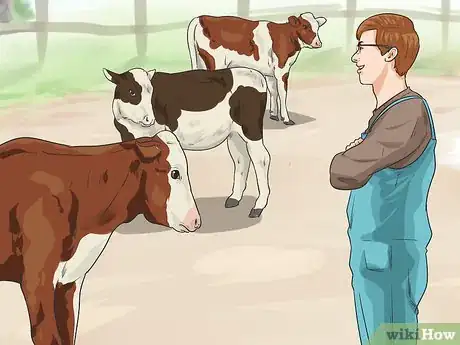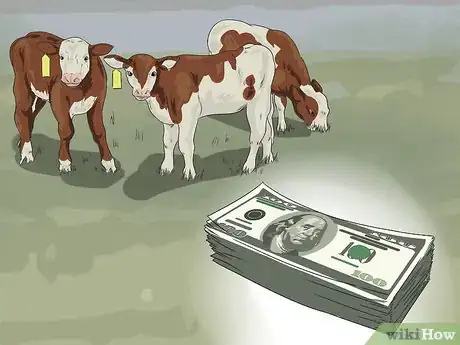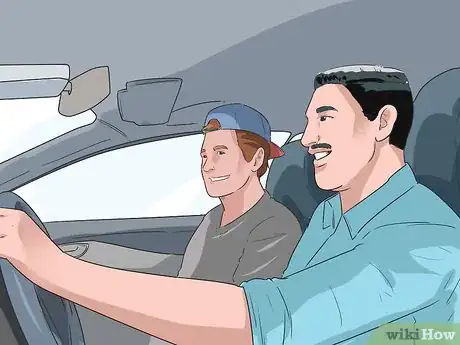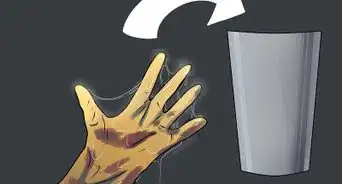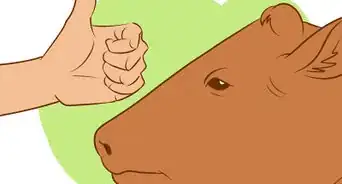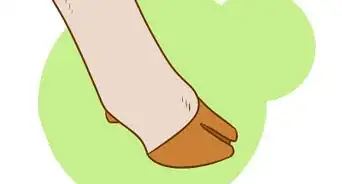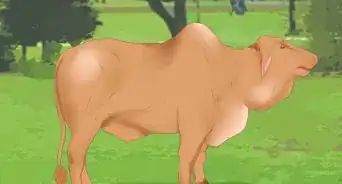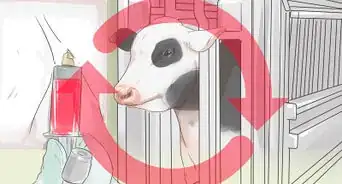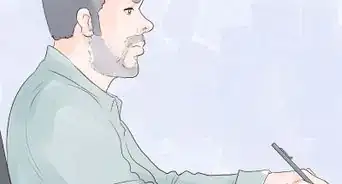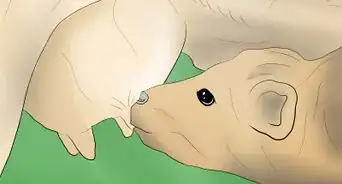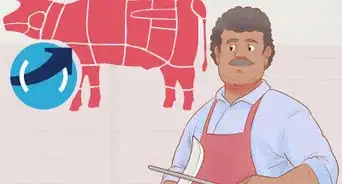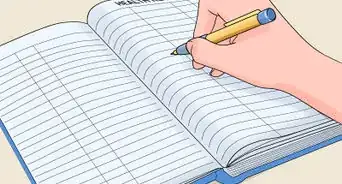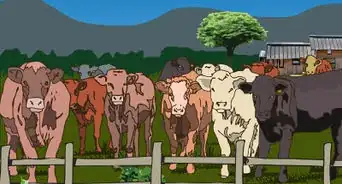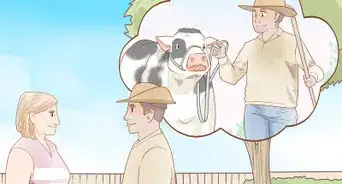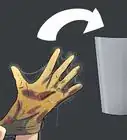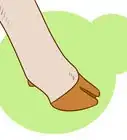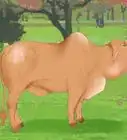This article was co-authored by Karin Lindquist, a trusted member of wikiHow's volunteer community. Karin Lindquist earned a BSc in Agriculture as an Animal Science major from the University of Alberta, Canada. She has over 20 years of experience working with cattle and crops. She's worked for a mixed-practice veterinarian, as a sales representative in a farm supply store, and as a research assistant doing rangeland, soil, and crop research. She currently works as a forage and beef agriculture extension specialist, advising farmers on a variety of issues relating to their cattle and the forages they grow and harvest.
This article has been viewed 77,719 times.
Learn more...
Culling cattle is very important in any cattle operation because a producer gets rid of those animals that are inferior to the genetic qualities of the herd, those that are no longer productive, and those that have no value being in the cowherd any more. Each producer has their own culling standards that they set for their herds; some are more strict than others. But in the end, all producers have the same ultimate objective when it comes to culling cattle.
Steps
-
1During the year you are going through with your cattle operation, keep track of how each and every cow, bull and calf does during that year. You should be able to do this using any of the following criteria: body condition and ability to gain weight with no to little supplementation, fertility rate during breeding and calving season, age, conformation, temperament and health. You may also have to cull because you have too many animals on your farm or ranch to take care of. Weaning calves from cows and selling them is one culling method. Other instances are when you have a year of drought and you are forced to get rid of up to more than half your herd to keep you from running out of feed too soon.
- Body Condition and weight gain: If a bovine in your herd is not able to gain weight efficiently on pasture alone, or gain weight after calving while nursing a calf and going into winter feeding, she should be shipped.
- Cows that come up open during preg-checking, are late calvers or late breeders should be culled. Bulls that are infertile or cannot settle all the cows he's been exposed to should be culled. Often health and nutrition are factors affecting the fertility of your cow herd, and you may have to look at that as well if a lot of your cows are coming up open.
- Some cows can be too old to calve out or even raise a calf. This is apparent when their teeth have been worn down to the gums, when they have poorer fertility than the rest of the herd, or are generally not as productive and thrifty as they used to be.
- Good conformation in cattle is necessary if you are to keep a good, high producing cow herd. Cows must have good feet and udders, maintaining the depth in their ribs and rumps, and be overall as feminine as their breeding allows. Bulls must have great feet and legs, good scrotal conformation, good depth in the ribs and rump and have good masculinity and muscling. Replacement heifers should be growthier than other calves and have good conformation like their dams if they are to be retained. Any bovine in your herd that does not meet any of the criteria mentioned in the conformation article link above, they should be culled.
- Temperament is just as crucial as fertility and conformation in your cow herd. You should not be allowing any wild or unruly cows to be kept in your herd, as they are often dangerous to you, and can even stir up an unnecessary fuss in the herd. Any cows that are crazy, not docile, overly protective or aggressive towards you, or try to run to the hills whenever you're out checking cows should be culled. Any bull that challenges you and does not respect you (often when they've come to realize they're bigger and stronger and more intimidating than you) should be shipped ASAP.
- You may have some cattle that are just too wild to be put in the trailer. It may be more humane to put them down in the pasture and butcher them for the freezer right there. It'll save the headache and stress of forcing them to get in the trailer.
- There is a longer list for any potential health issues that will make you consider culling some cows from your herd. You may be the kind of producer that doesn't want to spend the money on vet medicine to treat a sick cow, bull or calf, and may choose to put them down instead. However, you may be the kind of producer that will try to treat a sick bovine, only to find their fertility has decreased, or they are chronically ill. Some diseases, like Johne's disease, are simply untreatable, and you will have to not only cull the cow with Johne's, but all her daughters and sons from your herd. Some animals you will find may be carriers for a genetic defect that is affecting your calf crop, and you may have to cull those as well. Mastitis in a dairy cow will often reduce her milk productivity, and she will be culled as well.
- Any bovines that have prolapsed, have pink-eye or cancer eye, have sunburnt or frost bitten udders or testicles, or consistently have been difficult with calving, must be culled.
- Please see your local large animal veterinarian for any information on diseases you will need to keep an eye out for in your cow herd.
- Selling your year's calf crop is another form of culling, though this is really a result of your year's work of keeping the cow herd in top condition and quality. If you choose to keep your calves back for a while, remember you are doubling your herd size if you do so, and need more pasture and/or feed to keep these calves for an extra few months or even a year (if necessary). It's highly recommended, if you are primarily a cow-calf producer and not a cow-yearling producer, to sell your calves right after they've been weaned.
-
2When deemed necessary, separate those animals that are on your cull list into a separate pen or corral from the rest of the herd using calm herding practices. The top priority animals that should be culled out of the herd sooner (if possible) are those with bad temperament issues and/or health issues. Some animals with bad health issues can be kept back particularly if you are willing and able to treat them back to health. Other animals with health issues that cannot be treated and should be culled as soon as possible. When it comes to bad temperamental issues, however, it is highly recommended that you get rid of these animals right away. If you are working alone, you will need to call someone to help you separate the bad animal from the herd, or wait until you can sell your other culls to separate that animal with the other culls.Advertisement
-
3Phone the auction barn and go load them up into a stock trailer. It's best if you separate your cattle into different groups before you haul them to the auction mart. For example, you may only have one cow with health issues, one bad tempered bull, and five cows that are too old to continue being production or bad conformation, and the rest of your culls are weaned calves you are intent on selling, but it's a good idea to load your cows and/or bulls together in one load, then your weaned calves in a separate load.
-
4Haul them to the auction.
-
5Back up to the stockyard entrance where you can unload your culls, then go to the office and pick up your bill. Your animals will be weighed first before you get the bill of sale, and how much your animals sell for goes according to what the current prices are for each type and size of animal.
-
6After you have picked up your cheque, take yourself, your truck and that empty trailer home and enjoy the rest of the day.
Community Q&A
-
QuestionHow much is a cull cow?
 Community AnswerDepends on the current market value and the type of cull cattle being sold. A cull cow can run anywhere from $0.50 per pound to $1.50 per pound. Bred cows and bred cows with calves will be more than open (non-pregnant) cows. Heifers will be cheaper too. Check your local market listings on current cattle prices for different classes of cull cows.
Community AnswerDepends on the current market value and the type of cull cattle being sold. A cull cow can run anywhere from $0.50 per pound to $1.50 per pound. Bred cows and bred cows with calves will be more than open (non-pregnant) cows. Heifers will be cheaper too. Check your local market listings on current cattle prices for different classes of cull cows. -
QuestionHow do farmers kill their cattle?
 Community AnswerCulling is not to kill. Culling is to sell excess stock from the farm. A farmer would not be killing his cattle unless some are for meat or there are sick or injured cattle that need to be dispatched. A bullet through the forehead does the trick. Blatant negligence by denying proper nutrition, water and shelter to cattle will also kill them. When this happens, it would be hoped that a citation from the SPCA is ordered to seize the animals, and the state/provincial court issues it illegal for that "farmer" to own any animals for the rest of his/her life.
Community AnswerCulling is not to kill. Culling is to sell excess stock from the farm. A farmer would not be killing his cattle unless some are for meat or there are sick or injured cattle that need to be dispatched. A bullet through the forehead does the trick. Blatant negligence by denying proper nutrition, water and shelter to cattle will also kill them. When this happens, it would be hoped that a citation from the SPCA is ordered to seize the animals, and the state/provincial court issues it illegal for that "farmer" to own any animals for the rest of his/her life. -
QuestionHow does culling using the cow's teeth work?
 Community AnswerCheck the molars of the cow to see how worn down they are. If they are worn down to the gums, then she is determined a cull. When a cow's teeth are worn down so much like that, they aren't able to chew and process coarse forages anymore, and thus become "poor doers" or cattle that need more attention nutritionally than other cattle that have a "full set" of teeth. Cows need their teeth to graze and eat, and if they don't have their teeth, they can't do much for themselves; the end up slowly starving to death because they can't break down their food as well.
Community AnswerCheck the molars of the cow to see how worn down they are. If they are worn down to the gums, then she is determined a cull. When a cow's teeth are worn down so much like that, they aren't able to chew and process coarse forages anymore, and thus become "poor doers" or cattle that need more attention nutritionally than other cattle that have a "full set" of teeth. Cows need their teeth to graze and eat, and if they don't have their teeth, they can't do much for themselves; the end up slowly starving to death because they can't break down their food as well.
Warnings
- Don't expect a big paycheck at the end, especially if you haven't been paying attention to local cattle prices.⧼thumbs_response⧽
- You may have a cow that is unusually wild or crazy, being unsteady on her feet, falling all the time, etc. These are prime symptoms of a cow with BSE, and this should be reported to your vet ASAP.⧼thumbs_response⧽
- Always expect the unexpected. And remember Murphy's Law as mentioned in How to Start up a Beef Cow Calf Operation: Anything that can happen will happen.⧼thumbs_response⧽
- Be extremely careful when handling crazy, high-risk and dangerous cattle. If you can, avoid getting in the same pen with these animals at all possible, particularly when you are putting them though the alleyway to the trailer. It may be best to let them go in on their own terms, with a bit of bribery of food and water you placed in the trailer beforehand. Make sure the trailer is the ONLY place where their food and/or water is, and you are out of sight when tempting them in.
- Some cattle that refuse to go in the trailer may go in if they follow other cattle. Cattle are herd animals and its embedded in their brains to be with and follow other cattle no matter what.
⧼thumbs_response⧽
Things You'll Need
- A good truck (preferably one that is able to pull over 5000 lbs of beef-on-the-hoof plus trailer without ruining the transmission)
- Trailer (any size, doesn't have to be brand spankin' new)
- Handling facility for herding and loading up cattle
- Sorting stick or paddle
- You, as a safe and proactive driver
